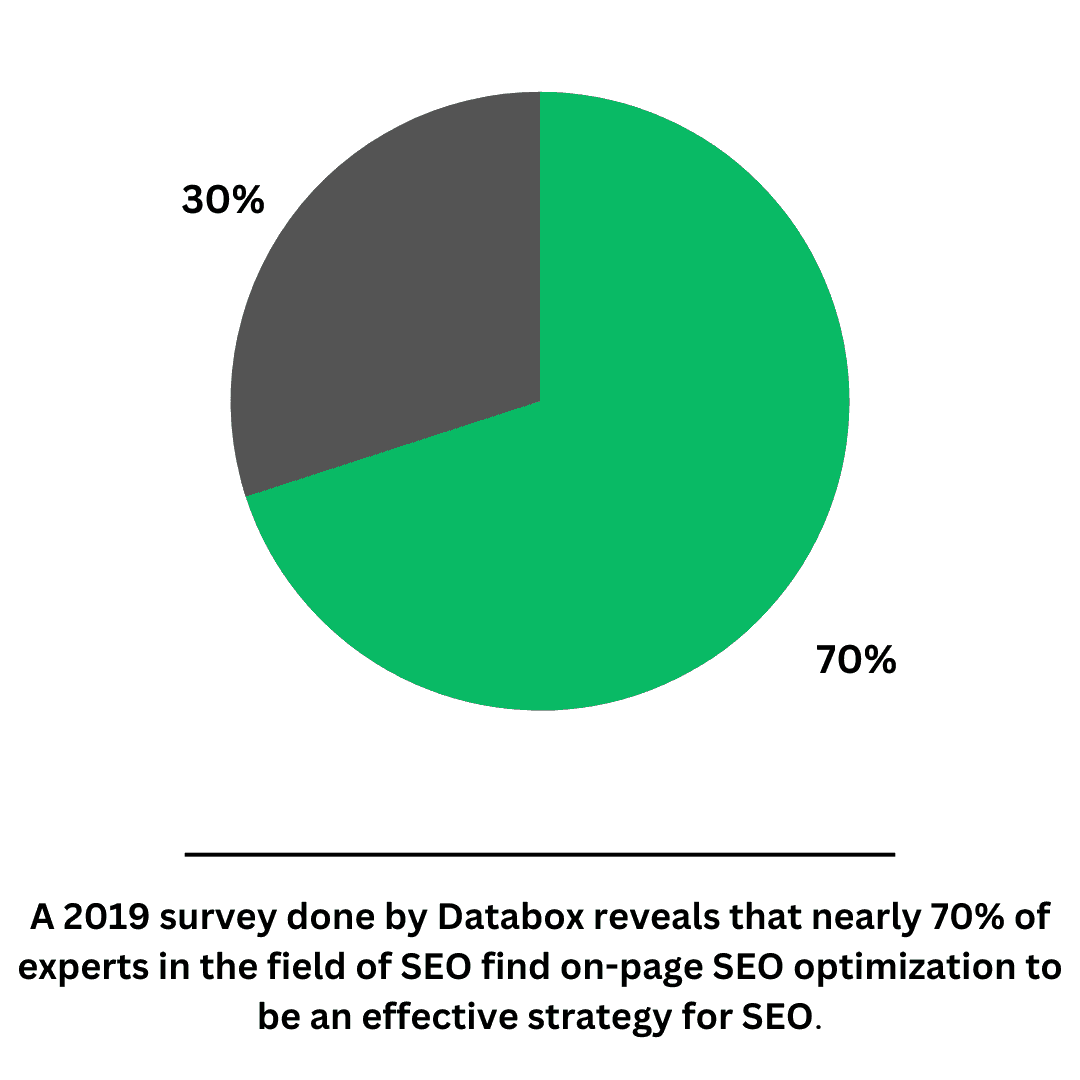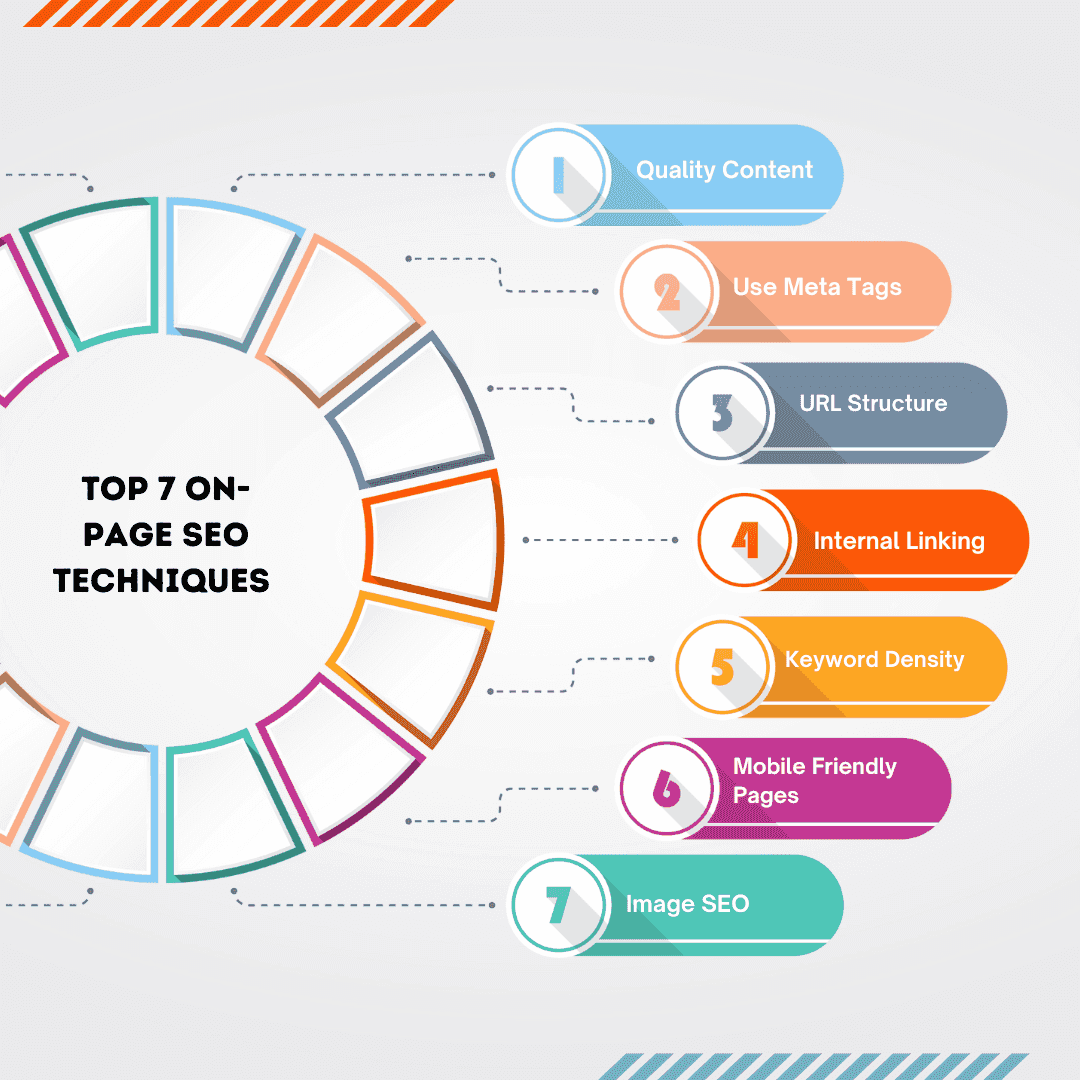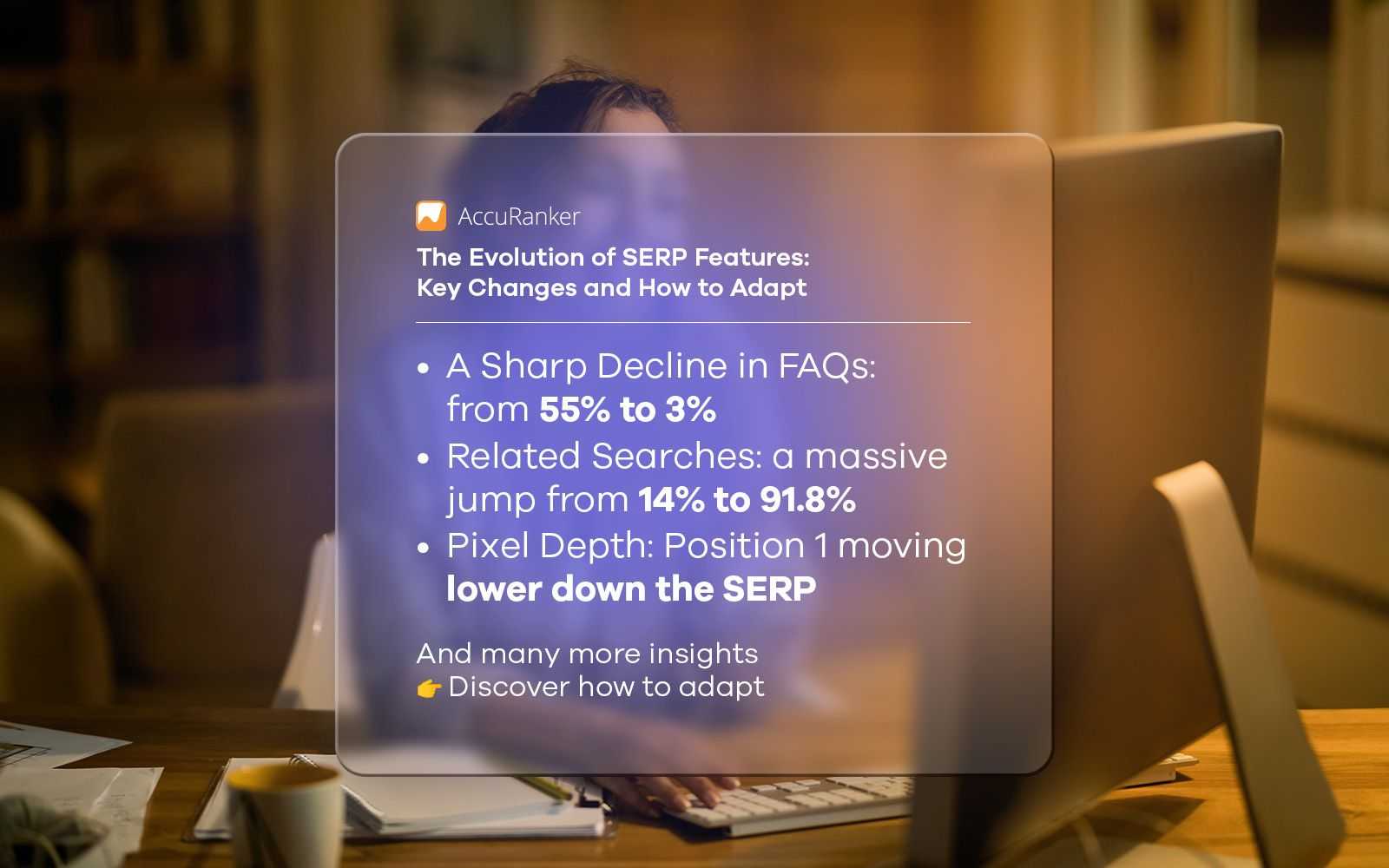7 On-Page SEO Techniques You Must Not Miss
Last updated on Wednesday, September 20, 2023

An Introduction to On-Page SEO
When webpages are internally optimized for a better ranking on search engines, the process is known as on-page SEO or on-site SEO. SEO is the optimization of websites that is done for them to figure higher in search engine results, which is why it is known as Search Engine Optimization (SEO).
The process of on-page SEO also helps in bringing in organic traffic for websites, owing to the process of SEO, which puts the sites at a better rank in search results. A major defining factor of on-page SEO is that it involves working on the content on a webpage as well as the HTML source code of the page, as opposed to off-page SEO, which focuses on links and external traffic sources.
As far as content is concerned, while working on on-page SEO, it is important to work on keywords being used in content that is informative, high in quality, and properly researched. The keywords help search engines identify the webpage as a relevant search result for searches that relate to the keywords and key phrases used on the page.
Coming to the core of on-page SEO, the HTML source code, it is important to make use of apt title tags, meta descriptions, and header tags, as well as maintain a good structure for the URL, for the website to be viably optimized. To understand SEO, you need a website, and the best way to start the website development process is by using Kadence themes on WordPress.
It is important to note that on-site SEO, or on-page SEO, is what helps search engines find the right results for searches that are run on the engines.

The efforts do affect the traffic as well as the conversion rates of websites when on-site SEO techniques are put to use.
In pursuit of understanding the techniques of on-site SEO that work best, it is important to have an in-depth understanding of SEO and how it works.
Getting to Know Search Engine Optimization
What Is SEO?
In the arena of the world wide web, great importance is given to search engines because of the nature of the work that they carry out. The best search engines scour through the depths of the internet to find results for search queries put up by users in the search bar.
While the search engines do a thorough job of showing results based on searches, it is the SEO that brings truly relevant and useful results to the fore in the searches, which means that the best matches are put higher on search result rankings.
Websites that aim to appear higher on search engine results, ned to opt for a process called Search Engine Optimization (SEO) so that their website may appear among the first few search results when a relevant search is run.
The process of improving the quality and increasing traffic to a website is called SEO. Various efforts are put in by SEO experts in optimizing a website, from modifications to the website to working on the content that goes into the website, improving the user experience and working on on-page SEO.
All these efforts combined together help in adding value to SEO and helps bring unpaid or organic traffic to the website.
The Importance of SEO:
There are a number of reasons why Search Engine Optimization or SEO is important. Having a comprehensive understanding of why SEO is important helps carry out better on-page SEO actions.
Here’s why SEO is essential for all kinds of websites:
Visibility: When you want your website to be more visible to your target audiences, it is important to make sure that you get SEO in place. The best SEO efforts will have your website figure in search results when a related keyword or key phrase search is run on a search engine.
Increased Trustworthiness: When your website appears higher on a web search result, it is automatically considered as trustworthy and credible.
Better Traffic: With the help of effective SEO, the traffic on your website can be increased substantially, while ensuring that all of the traffic is organic or unpaid.
Need of The Hour: It is important to put your efforts towards SEO because all your competitors are doing it. This means that if you do not give SEO a serious thought, your target audiences will be visiting your competitors’ sites when they should be visiting yours.
Budget Friendly: Getting SEO done for your website is much more budget friendly as compared to any other marketing technique online. This is because most efforts for SEO can be done for free without having to purchase ad space on the internet.
The Why and How Of On-Page SEO
Why is on-page SEO important:
Apart from offering a great user experience, on-site SEO is also important because it is one of the most essential factors in adding value to the overall SEO effort of a website. When you have on-site SEO sorted, it is possible to make sure that you have better chances of getting at the top slots of search engine results.
- The Top 7 on-page SEO techniques That You Should Try:
![Top On page seo techniques]()
Quality Content: In creating content for the website, it is important that you keep it factual and informative. It is also important to ensure that your content is easy to read because readability adds brownie points when it comes to earning better search ranking. Here’s how you can add great content to your website:
Use short paragraphs and a good flow for your content.
Add researched and credible information to the website.
Keep it simple and easy to read through.
Bullet points help most in keeping the readability score high.
Use Meta Tags: These are the behind-the-scenes superheroes that work towards increasing the ranking of your website. The metatags are extremely short form content types that are used for describing web pages and are used in the source code of the site. Even though metatags are not visible for readers to read, the search engines do recognize them and use them to show your website on better ranks in web searches. Here’s how the best meta tags are managed:
Use a title tag that is short and descriptive, also use keywords
Write a meta-description which is about 160 characters long and describes the page aptly, using keywords for this too is important.
Meta Robot tags need to be used so that search engines may be guided on which pages to crawl, index and avoid indexing.
URL Structure: URL structure plays a significant role in on-site SEO as it helps search engines understand the content and context of your webpage. A well-structured URL can boost your search engine rankings and improve the user experience. Check out how to create the best URL structure for managing on-site SEO.
Keywords are your best friends all around. You need to use them in the URL too.
A short URL is easy to remember and reach, it is your best bet.
Hyphens are a safe choice for separating words as opposed to any other character choice.
Using lowercase letters is recommended to avoid messing up the case sensitive URL.
Using numbers and alphabets is a better option when creating a URL
Avoid using dynamic URLs, static URLs are much more SEO friendly in comparison.
Internal Linking: Linking a page of your site to another page of the site is internal linking. This is something that is convenient not only for SEO but also for users that come on your site to navigate through it and explore. Here are some best practices that you can adopt for internal linking on you website:
Use relevant anchor text to add links to other pages. This implies that a word that you make clickable should be related to the page that it directs to.
Repeatedly link pages that are more important for you. Search engines pay more attention to heavily linked pages.
Control the linking and avoid over-linking on a page to keep it from looking like spam links.
Try to have deeper links so that search engines can dive further into your website.
Keyword Density: This is a measure of how often a keyword is used and can be an important factor in SEO. However, it's important to note that simply repeating a keyword a lot of times won't necessarily lead to better rankings. In fact, it could lead to keyword stuffing, which is a black-hat SEO tactic that can cause search engines to penalize a website. Here are some tips to maintain optimal keyword density:
Keywords should fit seamlessly into content and not disrupt the reading experience.
A keyword density of 1-2% is generally recommended and will not be considered as stuffing.
Using different forms and synonyms of a keyword can help avoid repetition and make content more engaging.
Use long-tail keywords which visitors are more likely to use when they’re closer to making a purchase
Keywords can be more effective when placed in certain parts of a page, such as the title, header tags, and the first paragraph of content.
Mobile Friendly Pages: Most people use their mobiles to surf through the internet. This means that the probability of your website being visited using a mobile is much higher, which is why the pages of your website need to be made mobile friendly for the site to be truly optimized. There are several reasons why having mobile-friendly pages can impact SEO:
Hard to navigate websites suffer from a higher bounce rate thereby affecting your SEO score negatively.
Visitors are more likely to stay on your site for longer periods. This can increase your average session duration, which is a positive signal to search engines.
Mobile-friendly sites are more likely to rank higher in search engine results pages than sites that aren't optimized for mobile.
- Image SEO: Image SEO is a critical aspect of on-site SEO, which refers to optimizing web elements on a website to improve its search engine visibility and user experience. Optimal mobile image SEO is done through several steps:
Use descriptive, keyword-rich file names. Search engines search for keywords within your image file names.
Always describe your visual and video media using alt tags, or alternative text descriptions. They allow search engines to locate your page.
Images should be appropriately sized. Large file sizes slow down your site speed, which can impact your ranking negatively.
Use structured data to provide additional information about the image which can help in getting your images displayed on image search results.
Include images in your sitemap to help Google find your images and lead to them appearing in image search results.
Ensure your images are responsive, i.e., they are adapted to the user's screen resolution.
On-Site SEO – An Important Pillar of the SEO Process
It is safe to say that on-site or on-page SEO plays an essential role in the overall search engine optimization process of a website. With effective and strategic efforts towards getting on-site SEO sorted, a website may be able to experience a lot more traffic and attention.
In the course of finding success for a website online, it is important to make sure that the first steps towards optimization are applied on the site. All the small and big efforts and SEO strategies of on-site optimization come together to bring about results in the form of better rankings on search engines for the website.
Effective on-site SEO practices can significantly increase organic traffic and improve your website's visibility on search engines, leading to higher conversion rates and ultimately contributing to the overall success of your online business. Therefore, on-site SEO is an indispensable part of any successful digital marketing strategy.
In pursuit of a successful website, it only makes sense to opt for on-site search engine optimization right when the website is being built. If the foundation is strong, your website is bound to see successful traffic numbers.

Article by:
Sairam Iyengar
Founder at ByValueMoney.
I am Sairam Iyengar, enthusiastic about LinkedIn and passionate about content strategy, I thrive on connecting with people and immersing myself in the business world. With a dynamic background, I've hosted a podcast interviewing industry leaders, advocated personal branding, and excelled at several MNC’s as an SEO executive.
Executive, spearheading link building and content creation. My experience as a Social Media analyst fortified my proficiency in managing diverse platforms.
I am currently running a blog named byvaluemoney.com, where I document how to execute SEO insights and AI tips. My journey aligns seamlessly with my pursuit of strategic digital engagement.



